On the move with Damon Rinard
Damon Rinard is a very passionate and smart engineer who recently started a new job with Cannondale – Cycling Sports Group. Learn more about this humble man who has previously worked for Kestrel, Trek and Cervelo and who has touched many of the products we ride today.
Slowtwitch: Thank you for your time Damon.
Damon Rinard: You’re welcome Herbert.
ST: How long have you been in Connecticut now?
Damon: I started Monday January 5th. Cannondale provides free bagels every Friday morning, and I’ve eaten three bagels, so that’s three weeks now. Thanks Cannondale!
ST: Do they limit the bagels or are you good about not overindulging?
Damon: It’s a free-for-all, but I haven’t seen any bad behavior. Usually you can count on getting one until about 9 am when they’re usually all gone. They’re baked locally, and spinach is a favorite. Green bagels!
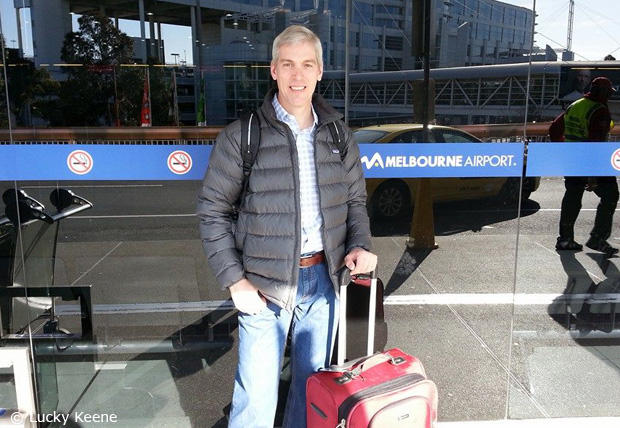
ST: Do you still have boxes to unpack or are you more so an orderly man along those lines?
Damon: Ha! Actually, I’m staying in a cheap hotel until we close on a house we’re buying. If all goes well I should be moving in two or three weeks. Shortly after that a truck can bring our stuff from Toronto. Jane is still in T.O., “camping” in our nearly empty apartment until Turbo Training is finished (end of March), then she’ll move here to Wilton. I’m looking forward to us being together again!
ST: I think your new title at Cycling Sports Group/ Cannondale is Engineering Manager for road bicycles. But you do not appear to be a man who is about titles.
Damon: Correct, I’m the Engineering Manager, Road Bicycles. There are four of us engineering managers, one for mountain bikes, one for suspension, and one for urban bikes.
ST: Can you explain to us what this new job will entail?
Damon: The CSG Road Engineering Department will be responsible for all the engineering that goes into Cannondale and GT road bikes. Of course, as you’d expect, that includes elite racing bikes like the EVO and CAAD series (including track), tri bikes like the Slice and Slice RS, endurance road bikes like the Synapse (disc or rim brakes, carbon and aluminum) and the cyclocross bikes, in carbon and aluminum.
We also support the GT Grade projects, even though its character makes it more rogue bike than road bike. Plus any new bikes that may or may not be under development.
ST: Is that for all of CSG’s brands?
Damon: Mainly Cannondale and GT, although we occasionally help out with the other CSG brands as well.
ST: You just started there and clearly there are several bikes already well in the pipeline, but how far down the road will we see bikes you actually touched from the start?
Damon: It takes two to three years to develop a new bike, sometimes longer if it’s especially heavy on R&D.

ST: Talk about your background. I think you got started with Kestrel way back then – the very early days of carbon.
Damon: Fun fact: in the late 1980s, Joe Montgomery visited San Diego Cyclery, where he told me I sold the most Cannondales west of the Mississippi. Funny, I had to be told who he was at the time!
I earned a B.S. in Mechanical Engineering from San Diego State University in 2000, where my Senior Project involved developing and manufacturing one of the first full-carbon clincher rims.
Prior to university, following years of retail bike shop experience in Atlanta and San Diego, I moved to Watsonville in northern California to be the Technical Services rep for Cycle Composites Inc., the start-up company that developed the Kestrel brand. Later I worked as an Associate Engineer at GKN Aerospace, using non-contact Moiré interferometry to measure airfoil coordinates on titanium jet engine fan blades.
After graduation, I became an engineer with Trek, where I worked for seven years, ending up as an Advanced R&D Engineer in Trek’s Advanced Concept Group. I worked with Trek engineering teams on such projects as carbon fiber hubs (I hold a patent on them); defining the application — and quantifying the fatigue effects — of spoke stress relief; CFD analysis of helmet aerodynamic drag and heat transfer (ventilation); and saddle comfort research with the University of Wisconsin’s Biomedical Engineering department. I also helped pioneer the use of new engineering technologies at Trek, including CFD simulation of fluid and thermal flows.
In 2009, I moved to Toronto to work at Cervélo Cycles in two roles, as Senior Advanced R&D Engineer, and Race Engineer with the Cervélo TestTeam riders and support staff. My projects there focused on bike & rider aerodynamics, mechanical usability, measuring comfort (vibration transmission and human perception), and frame geometry.
For decades, I’ve admired Cannondale's technical achievements, so I’m excited to learn more about the brand's values and help support the Road Engineering team.
ST: Was Joe Montgomery surprised you did not know him?
Damon: Nah, I was just a college kid in a bike shop. Remember this was before the internet, so people weren’t expected to know as much as today, when you can just quickly google nearly anything. But that’s a whole different subject.
ST: I think you built your first bike in your garage.
Damon: Actually, the bike I think you’re thinking of is the Rinard DR-X, serial number 0004. The first three Rinard bikes were a lugged steel funny bike and two TIG welded steel track bikes. As far as I know, the carbon DR-X was one of only a few homemade carbon frames at the time. I still have it, but I haven’t ridden it for about ten years. I laid up the frame around the shift cables, and I’m afraid to take them out. I pulled out the guide tubes when the frame was complete, and the inside of the frame is so rough I think it would be virtually impossible to route new ones!
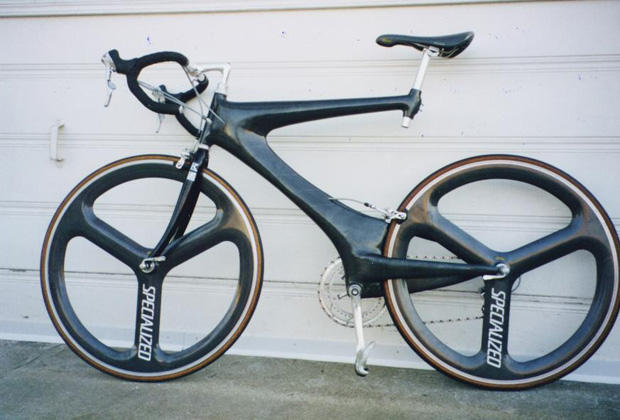
ST: Are you actually into classic bikes or did you just hold on to that one because of the personal connection?
Damon: My home made carbon fiber bike was a defining milestone for me as a young adult, and it was never made to be sold or even ridden by anyone else.
ST: How long did you work with Kestrel?
Damon: Three and a half years. I was so lucky to work with Preston Sandusky, Kevin Kenney and other engineers there. One day Preston got so annoyed at me for asking so many questions he finally said “Wadoodah, you should go back to school and study engineering yourself.” He was right, I did, and it changed the course of my career for the better. Thanks Preston!
ST: After that I think you made an impact at Trek for 8 years. I think the Madone was one of the bikes you touched. What else can be attributed to you?
Damon: I want to be clear here, I am humbled and honored to have played a small role within the project teams at Trek. These days virtually no products can be attributed to just one person any more, and I learned well the valuable contributions other team players make: other engineers of course, and people in other departments too, from product and project management, to marketing and sales, etc.
Products I’m proud to have been involved with include the Radial Ridge machined rims, aero tandem wheels, PowerTap wheels, Lemond “Min-Max” carbon frames (with Chad Lockart), geometry for a generation of Fisher road and CX bikes, early inForm saddles (with Jeff Staszak), plus some light engineering with the teams working on helmets, shoes and clothing.
Processes that I was involved with include bringing science to spoke stress relief (with David Guzik), hub and rim design (with Doug Nelson), improving dimensional inspection of rims and wheels (with Keith Bontrager), instrumented road testing of the effect of paired spokes on shimmy or speed wobble (with Matt Pfeffer, RIP), testing frame stiffness, wind tunnel testing (with many others), blind road testing to compare rider sensations on different road bikes (with many participants), handling, fit and geometry (with Tyler Pilger and others), especially the adoption of stack & reach at Trek, CFD aero analysis and wind tunnel testing.
I remember in 2006, sitting with George Hincapie and Tom Danielson in the wind tunnel ready room while Jani Brajkovic was in the test section, agreeing with George he should ride deep carbon wheels in Paris-Roubaix that year. I believe he might have been the first pro to do it. The wheels worked great, but unfortunately George didn’t finish the race. I think it wasn’t until after the Cervelo TestTeam used Zipp’s new wider 303s in P-R in 2009 that everyone started switching to carbon wheels for cobbles. Josh Poertner will remember this I’m sure!

ST: What do you think about Lance now?
Damon: I’m not so angry any more. I feel betrayed, because even though in nearly eight years at Trek I only met him twice, still I felt like I was a small part of the many people and organizations who supported those who supported him. Of course I see now, I was so naïve at the time. Years later, when Nike announced they would still support him, I was so mad, I ironed reflective patches over all my Nike logos and made that photo my first post on Facebook! The next day they dropped him like everybody else. I don’t buy the pro-Lance arguments; he not only doped, he was a bully. He wasn’t singled out; USADA offered him the same 6 months as the others and he declined. I tossed a bunch of signed posters. I’m still deciding what to do with a few other autographed pieces I have. Maybe burn them, ha ha. But who knows, they might be worth selling some day. In the meantime the movers can box ‘em up with the rest of our stuff and bring it all to Connecticut. No need to decide immediately.
ST: You still sound pretty angry.
Damon: I guess I take it a little personally, which I know doesn’t make sense because if you asked Lance I’m sure he would have zero memory of me, or anything I did. But at the time, public audiences and my personal friends heard me say things many times, like “I don’t think he’s doping, he might just be that good” which of course I was really wrong about, so I guess I have a raw nerve about it.
ST: Well, better back to hard goods. Where do you think road bike development is headed in the next 5 years?
Damon: More engineered, faster, more fun. However, it’s important to remember the bike isn’t the main thing. Sitting on the bike comfortably, choosing the right clothing and contact points, learning skills to enjoy riding in traffic or in a group, figuring out how to train (physically and mentally); all these make a bigger difference in how much fun a rider has than a bike with 200 grams less weight or 200 grams less aero drag.
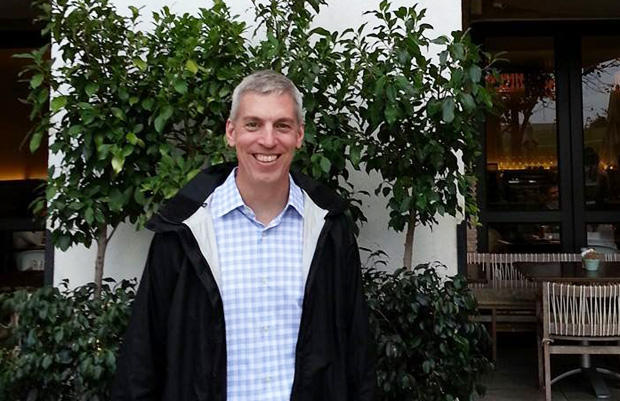
ST: And what about TT bikes?
Damon: The same, plus the realization that fitting the rider for aerodynamics is almost always more important than equipment choices. I predict more and more riders will get fitted in wind tunnels or on a velodrome with something like the Alphamantis Track Aero System.
ST: Your thoughts about disc brakes for triathlon bikes?
Damon: Get ready, disc brake tri bikes are coming. The first tri bike to successfully integrate disc brakes with good overall aerodynamics, stiffness, comfort and usability will find a ready and willing audience.
ST: Any other thoughts?
Damon: I love bikes and bike technology, but for me, everything has to be applicable to improving the ride: making it faster (or easier), more comfortable or more fun. In my opinion, technology for technology’s sake isn’t good engineering. Technology that makes riding better is what I love to work towards.
ST: What are you passionate about outside of cycling?
Damon: Hm, I’ll have to think about that. No, I think it’s just bikes. Wait, I know, our new house! In a few days we expect to become the new owners of a house, tiny by local standards, but twice as big as our Toronto apartment. Planning to add a new garage (with heated bike workshop, naturally). We’ll also decide about interior decorating. Important decisions like, where will the Computrainers go? So I guess in the end, for me it really is all about cycling.
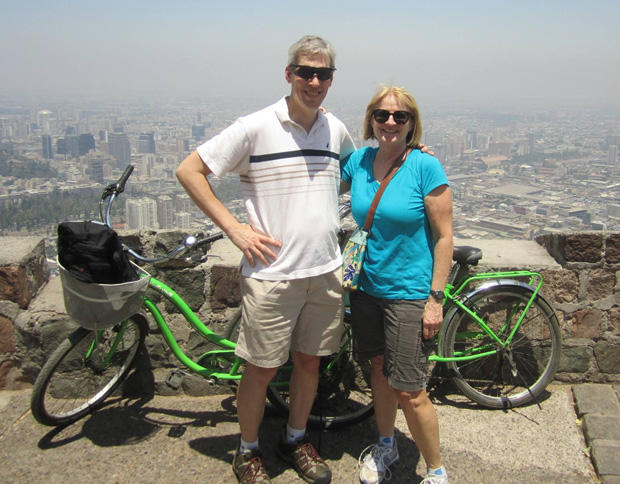


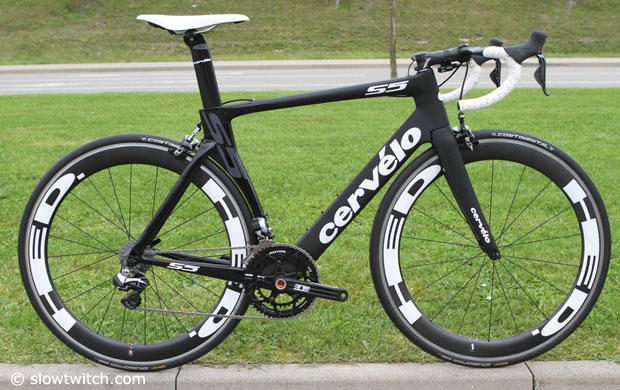
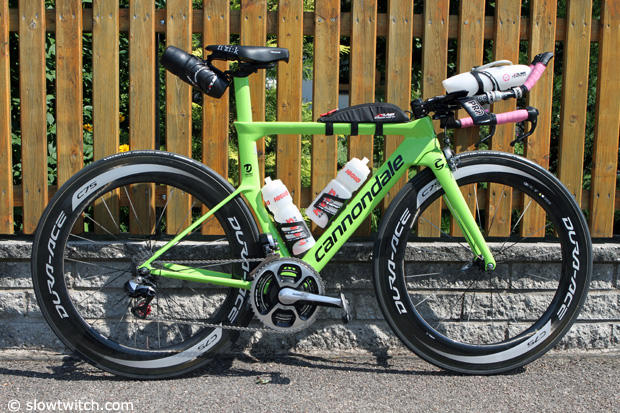
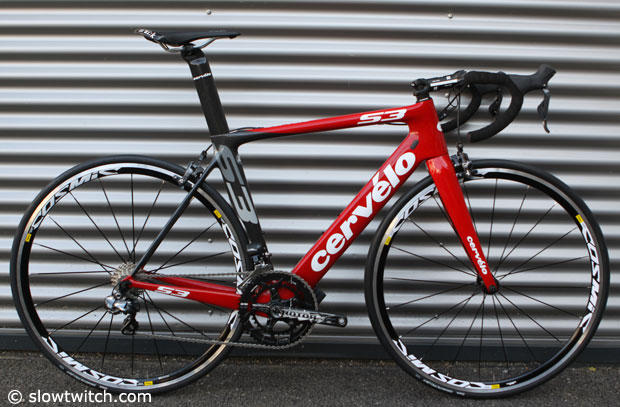
Start the discussion at slowtwitch.northend.network